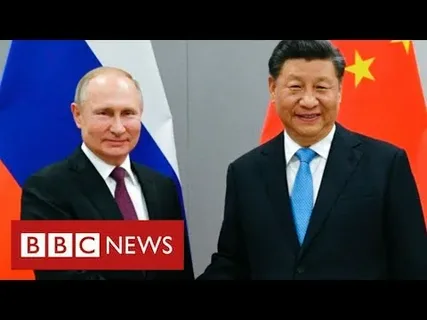Global Superpower Rivalry | How China, USA, and Russia Compete for Global Dominance
Introduction
The global power struggle has never been more intense than it is today. Three superpowers—China, the United States, and Russia—are engaged in a modern-day Great Game, each vying for supremacy on multiple fronts, including military strength, economic influence, technology, and strategic alliances. This high-stakes contest is shaping the geopolitical landscape, with these nations competing to expand their influence over key regions, critical resources, and international institutions.
From the Pacific Ocean to outer space, this battle for dominance has far-reaching consequences. This blog explores how these three global giants are maneuvering to maintain or expand their control in the ever-evolving world order.
The U.S. and Its Efforts to Maintain Global Hegemony
For decades, the United States has been the dominant global power, thanks to its strong military, extensive economic influence, and technological superiority. The U.S. military-industrial complex, supported by an annual defense budget exceeding $800 billion, allows the country to maintain hundreds of military bases worldwide, especially in strategic locations around China and Russia.
One of America’s strongest tools in this game is its Blue-Water Navy, which consists of powerful aircraft carriers, nuclear submarines, and missile defense systems. The U.S. controls critical trade routes in the Pacific Ocean, Indian Ocean, and beyond, ensuring dominance over international trade. In addition, the U.S. Space Force plays a crucial role in securing its assets in outer space, protecting satellites used for military, communication, and economic surveillance.
Furthermore, America has strengthened its alliances through military pacts like AUKUS (Australia-United Kingdom-United States) and NATO, which serve as counterweights to rising Chinese and Russian influence. The U.S. also leverages its economic power through sanctions, trade agreements, and technological restrictions to keep its rivals in check.

China’s Rapid Rise as a Superpower
China is the fastest-growing global power, challenging U.S. supremacy in every field. Through its Belt and Road Initiative (BRI), China has expanded its economic influence by investing in infrastructure projects across Asia, Africa, and Latin America. This has allowed Beijing to forge strong alliances and gain control over crucial maritime and land trade routes.
Militarily, China has built artificial islands in the South China Sea, converting them into military bases equipped with missile systems, aircraft runways, and radar facilities. The country is rapidly expanding its navy, air force, and cyber warfare capabilities to counter the U.S. military presence in the Pacific.
China’s ambition extends beyond Earth. The Chinese Space Program is working aggressively on satellite warfare, moon exploration, and anti-satellite weapons to challenge U.S. dominance in space. The country has already launched hypersonic missiles and AI-powered cyber tools to disrupt Western military technologies.
China’s rise is also driven by its technological advancements in 5G, artificial intelligence, and quantum computing. It is using economic leverage, technological prowess, and military expansion to carve a new world order, aiming to replace the U.S. as the dominant global superpower.

Russia’s Strategy to Revive Its Superpower Status
Despite economic sanctions and political isolation, Russia remains a formidable global power. With its vast nuclear arsenal and strong cyber warfare capabilities, Moscow is playing a different game—one based on covert operations, military interventions, and strategic partnerships.
Russia has demonstrated its military strength through the invasion of Ukraine, influence in Syria, and partnerships with China and Iran. Its control over energy resources, including oil and natural gas, allows it to influence global markets, particularly in Europe and Asia. The Kremlin has used energy as a geopolitical weapon, cutting supplies to certain nations as a form of economic pressure.
In the digital arena, Russia has been accused of hacking Western political systems, interfering in elections, and spreading disinformation through cyber operations. These tactics weaken its adversaries from within, making it a key player in the global information war.
Russia is also increasing its presence in the Arctic, where melting ice caps are opening up new trade routes and resource opportunities. By militarizing the region, Moscow is positioning itself to control the future of Arctic navigation and resource extraction.

The Battle in Outer Space
Beyond the Earth’s surface, the U.S., China, and Russia are engaged in an intense battle for space dominance. The ability to control satellites, deploy space-based weapons, and develop space stations will determine the balance of power in the 21st century.
- The U.S. Space Force is working on satellite defense systems, space surveillance, and missile-detection technology.
- China has developed hypersonic missiles capable of evading U.S. defenses and is testing anti-satellite weapons.
- Russia has been accused of jamming enemy satellites and launching kamikaze satellites that can destroy rival space assets.
The race for space militarization is becoming as critical as the nuclear arms race of the Cold War. Whoever wins this battle will control global communication, navigation, and surveillance, giving them a strategic advantage over rivals.
The Future of the Great Game
As tensions continue to rise between these three superpowers, the world faces a growing risk of economic warfare, cyberattacks, and military conflicts. The battle for technological superiority, resource control, and strategic alliances will shape the global power structure in the coming decades.
The U.S. is determined to maintain its dominance, China is aggressively pushing forward to become the new world leader, and Russia is using covert tactics to disrupt its adversaries. This modern-day Great Game will continue to influence global politics, trade, and security.
The question remains: Who will emerge as the ultimate superpower? Will the world remain unipolar under U.S. influence, or will it become multipolar, with China and Russia successfully challenging the American order? The coming years will reveal the next chapter in this ongoing battle for global supremacy.
Conclusion
The world is witnessing a power shift unlike any before. China, the United States, and Russia are engaged in a high-stakes struggle that will determine the global balance of power for the 21st century. From the seas to space, from economic sanctions to cyber warfare, this competition is affecting every aspect of our daily lives.
As nations continue to align with one superpower or another, the world order is at a crossroads. Will diplomacy prevail, or will this rivalry escalate into a new Cold War—or worse, a global conflict? Only time will tell, but one thing is certain: The Great Game is far from over.




Post Comment